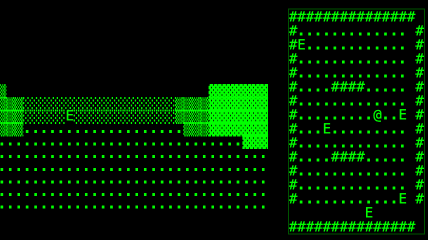Tuesday, 22nd April 2025
Working Through the Fear of Being Seen (via) Heartfelt piece by Ashley Willis about the challenge of overcoming self-doubt in publishing online:
Part of that is knowing who might read it. A lot of the folks who follow me are smart, opinionated, and not always generous. Some are friends. Some are people I’ve looked up to. And some are just really loud on the internet. I saw someone the other day drag a certain writing style. That kind of judgment makes me want to shrink back and say, never mind.
Try to avoid being somebody who discourages others from sharing their thoughts.
A5 (via) A5 is a new "global, equal-area, millimeter-accurate geospatial index" by Felix Palmer:
It is the pentagonal equivalent of other DGGSs, like S2 or H3, but with higher accuracy and lower distortion.
Effectively it's a way of dividing the entire world into pentagons where each one covers the same physical area (to within a 2% threshold) - like Uber's H3 but a bit weirder and more fun. An A5 reference implementation written in TypeScript is available on GitHub.
This interactive demo helps show how it works:

Why pentagons? Here's what the A5 docs say:
A5 is unique in that it uses a pentagonal tiling of a dodecahedron. [...] The benefit of choosing a dodecahedron is that it is the platonic solid with the lowest vertex curvature, and by this measure it is the most spherical of all the platonic solids. This is key for minimizing cell distortion as the process of projecting a platonic solid onto a sphere involves warping the cell geometry to force the vertex curvature to approach zero. Thus, the lower the original vertex curvature, the less distortion will be introduced by the projection.
I had to look up platonic solids on Wikipedia. There are only five: Tetrahedron, Cube, Octahedron, Dodecahedron and Icosahedron and they can be made using squares, triangles or (in the case of the Dodecahedron) pentagons, making the pentagon the most circle-like option.
Abusing DuckDB-WASM by making SQL draw 3D graphics (Sort Of) (via) Brilliant hack by Patrick Trainer who got an ASCII-art Doom clone running in the browser using convoluted SQL queries running against the WebAssembly build of DuckDB. Here’s the live demo, and the code on GitHub.

The SQL is so much fun. Here’s a snippet that implements ray tracing as part of a SQL view:
CREATE OR REPLACE VIEW render_3d_frame AS WITH RECURSIVE -- ... rays AS ( SELECT c.col, (p.dir - s.fov/2.0 + s.fov * (c.col*1.0 / (s.view_w - 1))) AS angle FROM cols c, s, p ), raytrace(col, step_count, fx, fy, angle) AS ( SELECT r.col, 1, p.x + COS(r.angle)*s.step, p.y + SIN(r.angle)*s.step, r.angle FROM rays r, p, s UNION ALL SELECT rt.col, rt.step_count + 1, rt.fx + COS(rt.angle)*s.step, rt.fy + SIN(rt.angle)*s.step, rt.angle FROM raytrace rt, s WHERE rt.step_count < s.max_steps AND NOT EXISTS ( SELECT 1 FROM map m WHERE m.x = CAST(rt.fx AS INT) AND m.y = CAST(rt.fy AS INT) AND m.tile = '#' ) ), -- ...
ClickHouse gets lazier (and faster): Introducing lazy materialization (via) Tom Schreiber describe's the latest optimization in ClickHouse, and in the process explores a whole bunch of interesting characteristics of columnar datastores generally.
As I understand it, the new "lazy materialization" feature means that if you run a query like this:
select id, big_col1, big_col2
from big_table order by rand() limit 5
Those big_col1 and big_col2 columns won't be read from disk for every record, just for the five that are returned. This can dramatically improve the performance of queries against huge tables - for one example query ClickHouse report a drop from "219 seconds to just 139 milliseconds—with 40× less data read and 300× lower memory usage."
I'm linking to this mainly because the article itself is such a detailed discussion of columnar data patterns in general. It caused me to update my intuition for how queries against large tables can work on modern hardware. This query for example:
SELECT helpful_votes
FROM amazon.amazon_reviews
ORDER BY helpful_votes DESC
LIMIT 3;
Can run in 70ms against a 150 million row, 70GB table - because in a columnar database you only need to read that helpful_votes integer column which adds up to just 600MB of data, and sorting 150 million integers on a decent machine takes no time at all.
I was against using AI for programming for a LONG time. It never felt effective.
But with the latest models + tools, it finally feels like a real performance boost
If you’re still holding out, do yourself a favor: spend a few focused hours actually using it